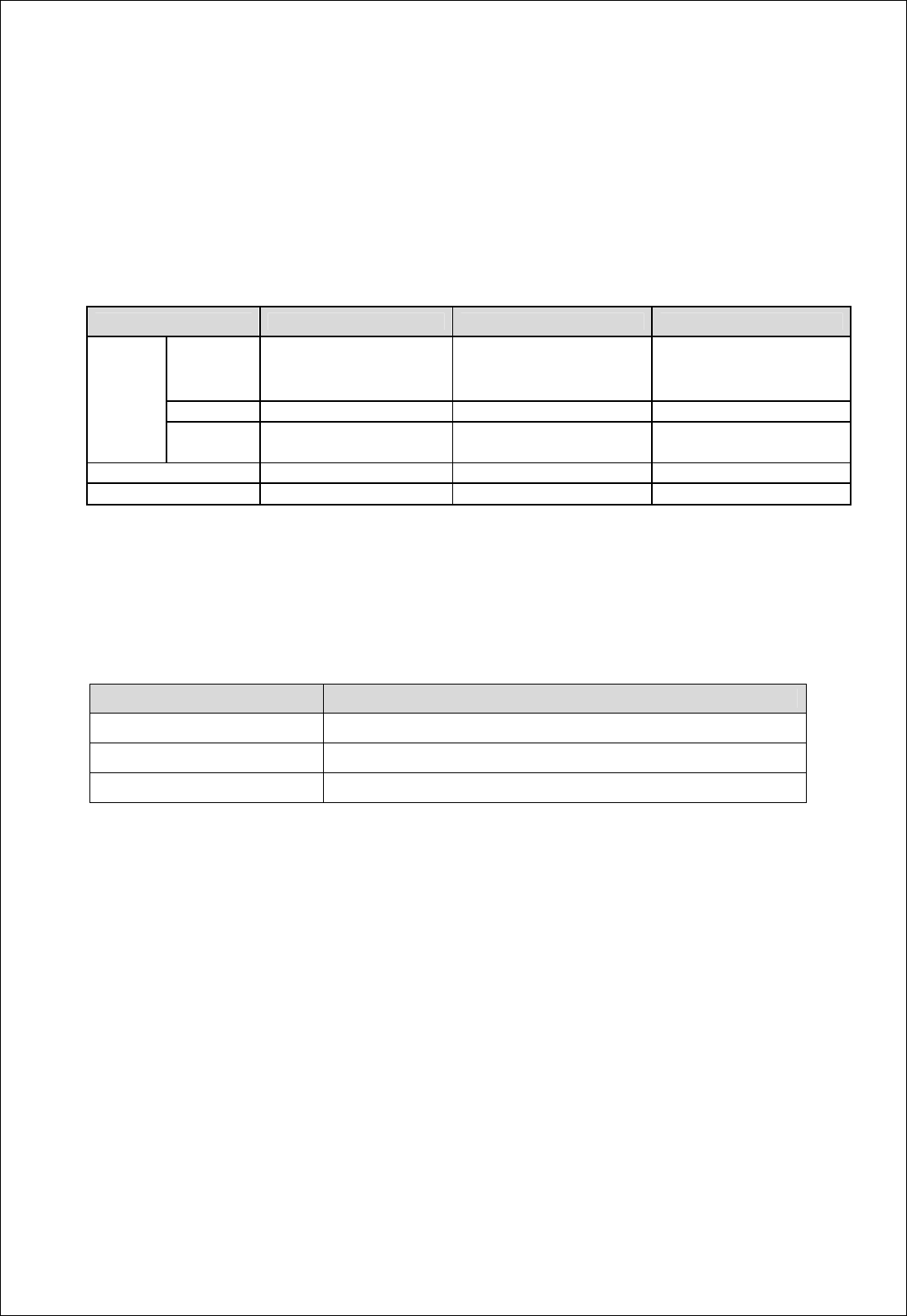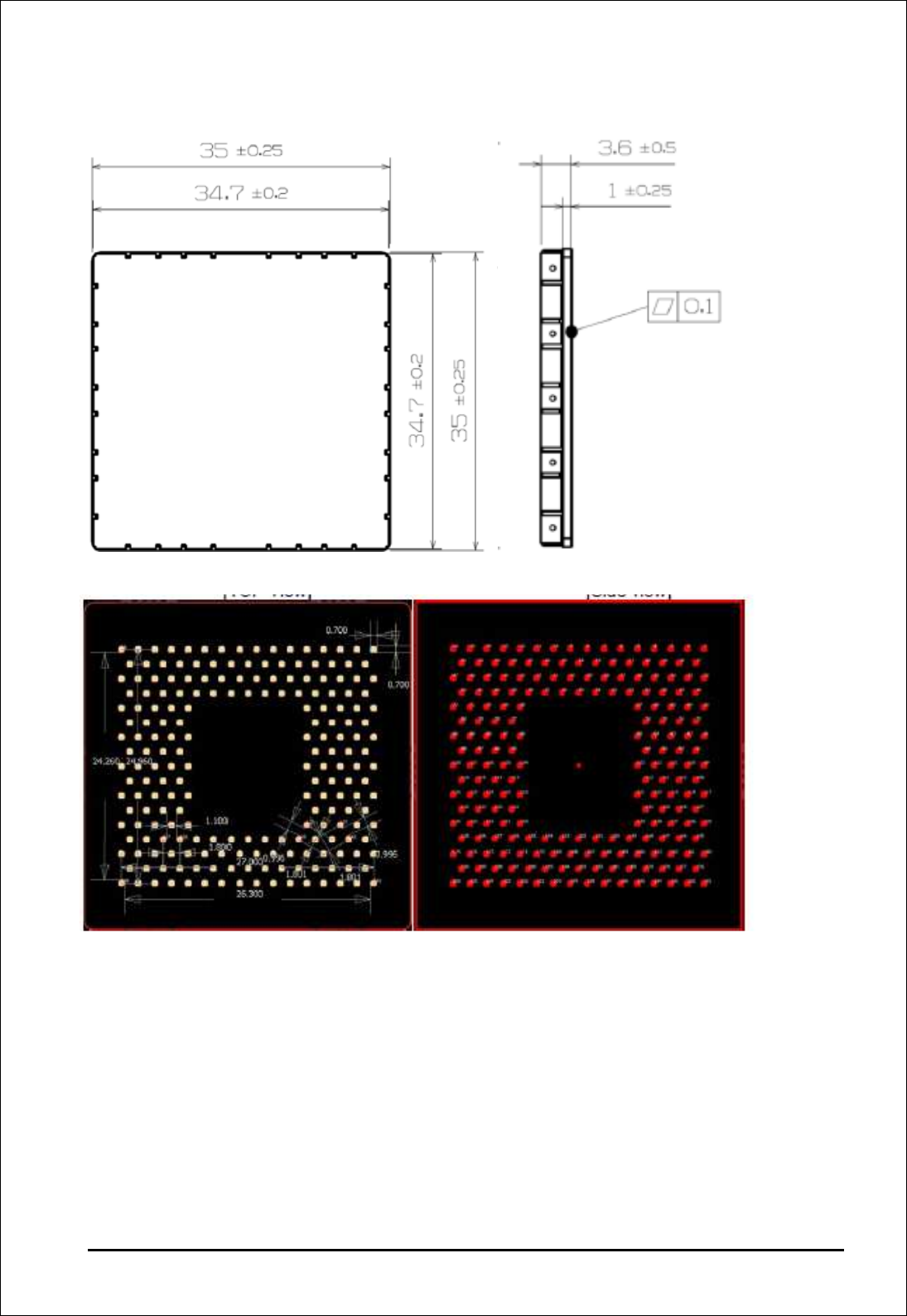LG Electronics USA TM01LA-E Telematics Module User Manual TM01LA N Rev04
LG Electronics USA Telematics Module TM01LA N Rev04
Users Manual

Technical Specification (TM01LA-()

1. Product Introuction
The TM01LA-E is designed for the automotive industry. They support LTE, WCDMA and
GSM air Interface standards. They also have Global Navigation satellite system (GNSS)
capabilities including GPS and GLONASS.
The TM01LA-E are based on the Qualcomm MDM9215 wireless chipsets and support the
following bands.
Table 1. Supported Band
Region 52:
Band
LTE
B7
WCDMA
B5
GSM GSM 850
GNSS O
Voice O
1.2 Environmental Specifications
The environmental specification for operating and storage of the TM01LA-E are defined in the
the table below.
LGE guarantee the automotive operation by internal reliability verification
Table 2. Environmental Specifications
Parameter Temperature Range
Operating Temperature 1) -40℃ to 85℃
Storage Temperature 2) -40℃ to +105℃
Humidity 95% or less
1) At 90℃operating, there is some deviation, but a module can meet 3GPP RF HW Spec
2) A module can accept over 105 ℃ storage temperature without packing
A module was guaranteed 34.2 MTTF in worst case at least
1.3 Electrical Specifications
This section provides details for some of the key electrical specifications of the TM01LA-E
embedded modules.
1.3.1 Absolute Maximum Rating and ESD Ratings
This section defines the Absolute Maximum and Electrostatic Discharge (ESD) Ratings of the
TM01LA-E embedded modules.

7/30
1.4 Mechanical Specifications
1.4.1 Physical Dimensions and Connection Interface
The TM01LA-E embedded modules are a Land Grid Array (LGA) form factor device. The
device does not have a System or RF connectors. All electrical and mechanical connections
are made via the 206 pad TM01LA-E on the underside of the PCB.
Table5. TM01LA-E Embedded Module Dimensions
Parameter Nominal Max Units
Overall Dimension 35 x 35 35.35 x 35.35 mm
Overall Module Height 3.5 3.85 mm
PCB Thickness 1.0 1.1 mm
Flatness Specification 0.1 mm
Weight tbd g

8/30
1.4.2 Mechanical Drawing
[Top view] [Right view]
[Bottom view]
1.4.3 Footprint

30/30
<FCC Warning Statements>
FCC Part 15.19 Statements:
This device complies with Part 15 of the FCC Rules. Operation is subject to the following two
conditions: (1) this device may not cause harmful interference, and (2) this device must
accept any interference received, including interference that may cause undesired operation.
FCC Part 15.21 statement
Any changes or modifications not expressly approved by the party responsible for
compliance could void the user's authority to operate this equipment.
RF Exposure Statement
The antenna(s) must be installed such that a minimum separation distance of at least 20 cm
is maintained between the radiator (antenna) and all persons at all times. This device must
not be co-located or operating in conjunction with any other antenna or transmitter.
The highest permitted antenna gains including cable loss for use with this device are: GSM850 /
WCDMA850 : 0.46 dBi, LTE7: 3.29 dBi
End Product Labeling
The module is labeled with its own FCC ID. If the FCC ID is not visible when the module is
installed inside another device, then the outside of the device into which the module is
installed must also display a label referring to the enclosed module. In that case, the final
end product must be labeled in a visible area with the following:
“Contains FCC ID: BEJTM01LA-E
OEM Responsibilities to comply with FCC Regulations
The module has been certified for integration into products only by OEM integrators under
the following condition:
- The antenna(s) must be installed such that a minimum separation distance of at least 20
cm is maintained between the radiator (antenna) and all persons at all times.
- The transmitter module must not be co-located or operating in conjunction with any other
antenna or transmitter except in accordance with FCC multi-transmitter product procedures.
As long as the two condition above is met, further transmitter testing will not be required.
However, the OEM integrator is still responsible for testing their end-product for any
additional compliance requirements required with this module installed (for example, digital
device emissions, PC peripheral requirements, etc.).
IMPORTANT NOTE: In the event that these conditions can ’ t be met (for certain
configurations or co-location with another transmitter), then the FCC authorization is no
longer considered valid and the FCC ID can’t be used on the final product. In these
circumstances, the OEM integrator will be responsible for re-evaluating the end product
(including the transmitter) and obtaining a separate FCC authorization.
Manual Information To the End User
The OEM integrator has to be aware not to provide information to the end user regarding
how to install or remove this RF module or change RF related parameters in the user
manual of the end product.